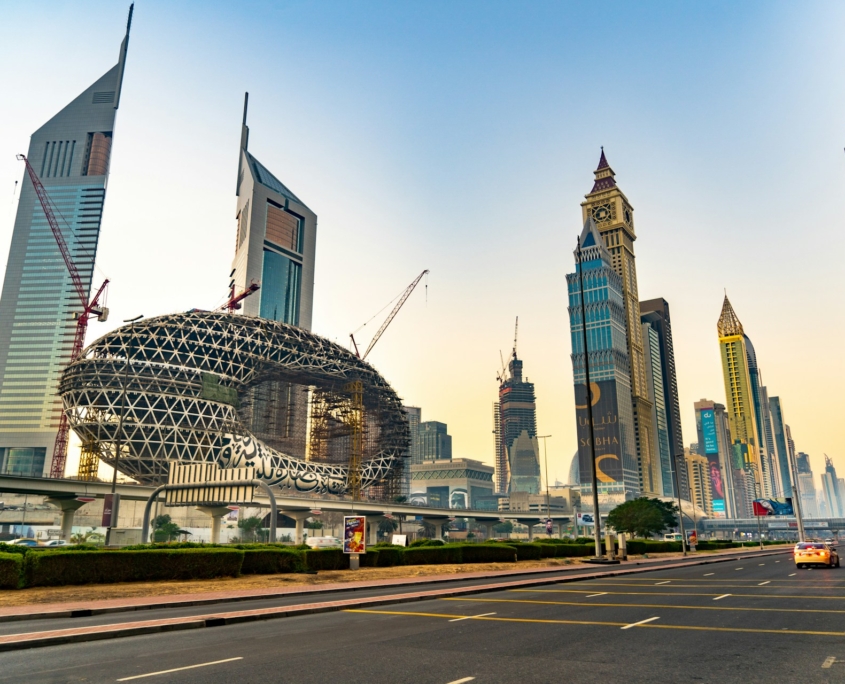Aid Organizations in the Middle East
 A region of rich history and political unrest, though renowned for its vast oil reserves and natural gas, poverty is a harsh reality that many face. This article explores aid organizations in the Middle East dedicated to fostering sustainable growth and alleviating poverty.
A region of rich history and political unrest, though renowned for its vast oil reserves and natural gas, poverty is a harsh reality that many face. This article explores aid organizations in the Middle East dedicated to fostering sustainable growth and alleviating poverty.
Abu Dhabi Fund for Development (ADFD)
Since 1971, more than AED 52.7 billion has been donated to finance projects in Bahrain, Oman, Jordan, Egypt and other Middle Eastern countries by the Abu Dhabi Fund for Development (ADFD). The headquarters are in Abu Dhabi, and the central focus is to help such countries reach sustainable growth and reduce poverty. ADFD values include cooperativeness, creativity, competency and commitment.
One way the ADFD helps is through renewable energy, it has an allegiance with the International Renewable Energy Agency (IRENA) to promote the widespread use of renewable energy. ADFD is also a provider of sovereign loans that meet the requirements of the Organisation for Economic Co-operation and Development (OECD).
The ADFD Success Story in Egypt
Egypt is one example of a poor nation in the Middle East, and has been a key focus of ADFD since 1974. Its capital Cairo has faced big issues with overpopulation. To curb these struggles, ADFD helped to construct a new city, named Sheikh Zayed City in Egypt in 1995. It provided Egypt with a grant of AED 735 million to facilitate this, and the city now attracts a plethora of tourists from all over the world. More than 70 projects in Egypt including sectors such as agriculture, electricity and water, social and health services, housing, industrial and transportation have been supported by ADFD. Egypt has received a total of AED 4 billion in total aid from ADFD till now.
Project Hope
Since its formation in 1958, Project Hope has worked alongside the Middle East to build skills among citizens and provide humanitarian care for refugees residing in Iraq, Lebanon, Jordan and Turkey. It works on the front lines by partnering with health care workers and health facilities, as well as working with public health systems to make long-term changes.
Project Hope Success Story in Syria
Syria’s civil war has been one of the world’s most renowned humanitarian crises. More than 12 million people are suffering from food insecurity since 2011, and millions are internally displaced.
In addition to war, climate shocks have contributed to poverty in Syria. In 2023, a 7.8-magnitude earthquake struck, killing around 6,000 Syrians and wounding many. After mere hours of the earthquake, Project HOPE activated its Emergency Response Team to provide essential items to those affected, despite difficulties due to the aftershock. HOPE has implemented personnel on the grounds to harmonize a long-term humanitarian response in these surrounding regions.
Project HOPE has teamed with local committees to implement shelter, mental health, mobile medical unit (MMU) and WASH programs. It has identified immense MHPSS [Mental health and psychosocial support] needs for survivors dealing with the long-term impacts of trauma. In northwest Syria, Project HOPE is supporting the nonprofit organization Sened Dernegi in efforts to provide MHPSS post-earthquake destruction.
It has also partnered with Syrian Relief and Development. It supports two mobile medical units in Azaz and Daret Azza districts in Syria. Each unit offers consultations to citizens, whether internally displaced or host residents. Services include reproductive and pediatric health care and nonspecialized mental health care integration. 8412 consultations were offered between March and June 2023 to the earthquake survivors.
Looking Ahead
These aid organizations in the Middle East are setting the tone for a brighter future. Investing in the Middle East is important, as geopolitical conflict has affected levels of tourism, which was once heavily relied on by these regions. Even outside of the main crisis states, such as Syria, Libya and Yemen, poverty remains through the aftermath such as sanctions and fewer investments.
– Sepy Akbarian
Photo: Unsplash
